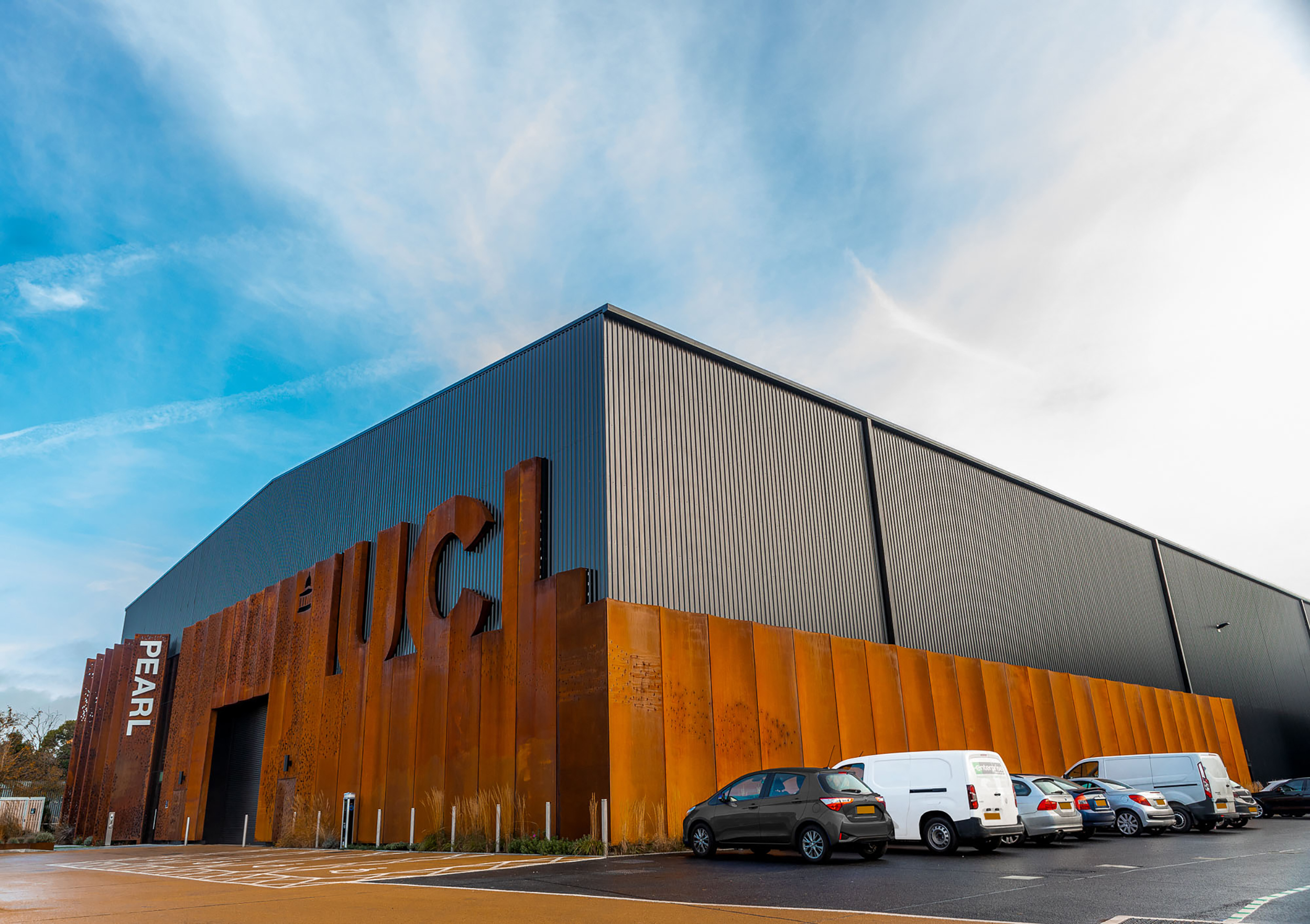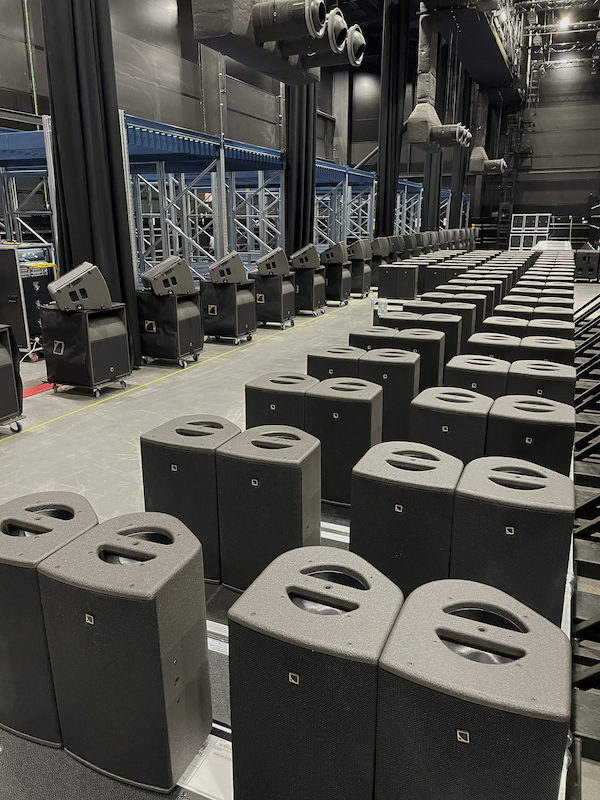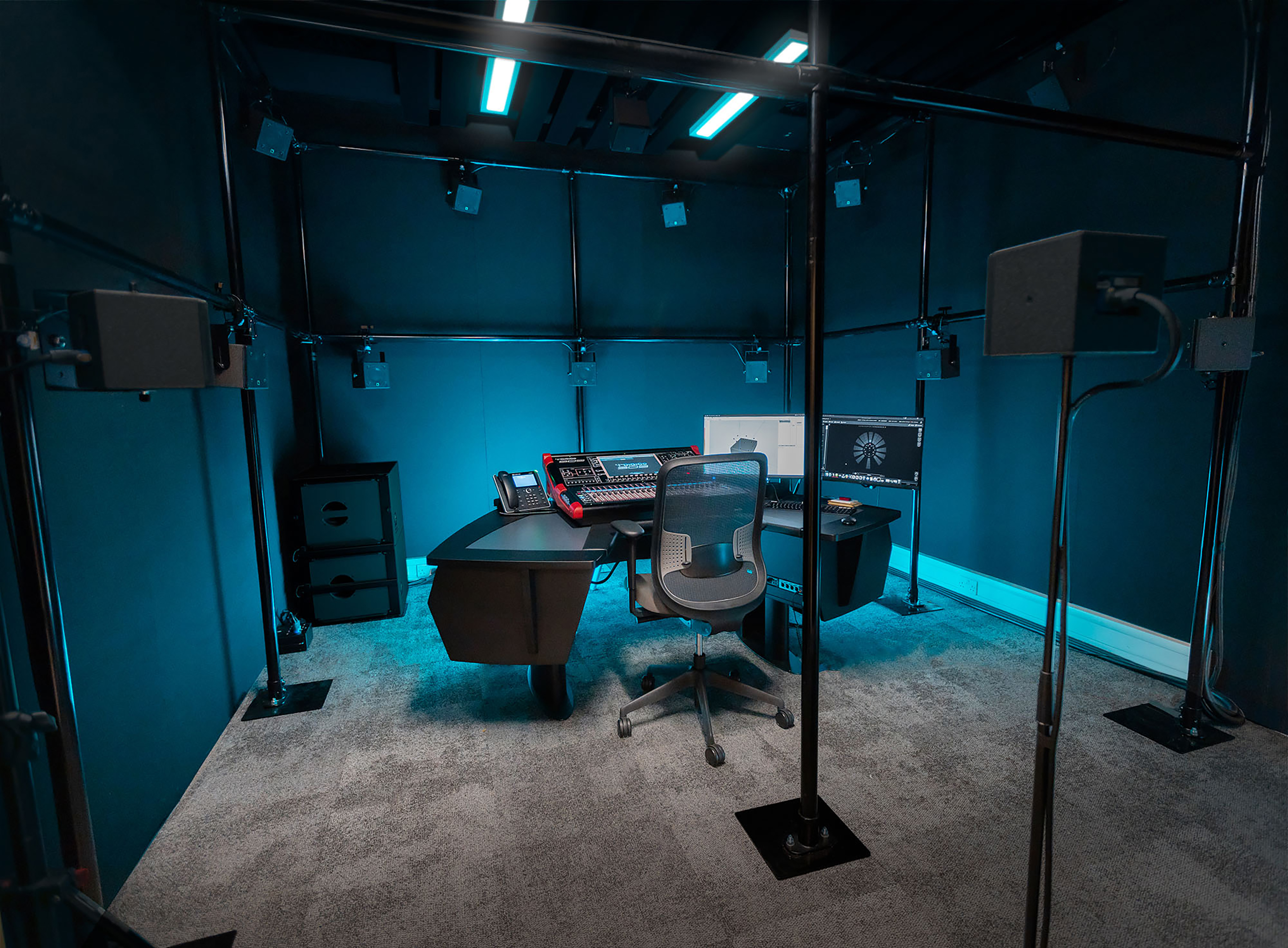UCL Recreates Everyday Life at PEARL in Groundbreaking Research Aided by L-Acoustics L-ISA Technology
How many loudspeakers does it take to recreate reality?

From the softest bird song to the most booming explosion, how many loudspeakers does it take to recreate reality? That's the question University College London (UCL) asked when they embarked on constructing the Person-Environment-Activity Research Laboratory (PEARL), a 4,000-square-meter, 10-meter-high laboratory and testing ground for simulating real-life events. The answer is over 150 L-Acoustics loudspeakers in an L-ISA Immersive Hyperreal Sound installation for this unique environment where entertainment technology meets scientific research.
Ranked eighth-best global university in the QS Ranking, UCL planned PEARL as a facility that enables the exploration of how humans interact with their environment by studying design effects on people. The UCL Department of Civil, Environmental and Geomatic Engineering's vision is to use PEARL to help create a world where everyone can achieve a better quality of life.
[L-Acoustics L-ISA Immerses an Opera Audience in Open-Air Sound]
At 100m end-to-end and 40m across at its widest point--bigger even than the floor area of Wembley Arena--the massive experimental space can be divided into four modules and is entirely carbon-neutral thanks to a roof of PV panels. In it, researchers can create life-sized, controlled-condition environments, such as a railway station or town square, so that they can study the crowd's interaction with the environment and each other. The floor's profile, type, and material can be changed, lighting can be of any hue and intensity, and different scents can waft through the air. As for the sound, L-Acoustics delivers dynamic, multi-dimensional audio that reinforces the subtlest of aural cues to the loudest heart-thumping roar.
Defining the Technology to Meet the Goal
Global engineering consulting firm Arup worked with UCL to define the range of technology that would deliver PEARL's goal, particularly audio spatialization, and then find the partners that could deliver the project.
Arup's Tom Brickhill worked closely with L-Acoustics applications project manager and consultant liaison Julien Laval on the initial design concept. "Being personally passionate about sound, and in particular the science of sound, I was incredibly eager to be involved in such a groundbreaking project, where entertainment technology serves academic purpose," explained Laval. "Collaborating with Tom, I was drawn into the phenomenal design vision for PEARL. During the evaluation stage, it quickly became apparent that L-Acoustics product design philosophy and advanced technology in the area of immersive audio made it the perfect match for this project.
A daily selection of features, industry news, and analysis for AV/IT professionals. Sign up below.
[Cal Poly's Spanos Theatre Comes Back to Life with L-Acoustics Kiva II]
With Brickhill traveling to Australia to work on another Arup project during the summer, Arup venue designer James Beer took over at PEARL. "We were pleased to initiate the relationship with L-Acoustics and Adlib, who then went on to win the competitive tender," said Beer. "We are always looking to create engaging environments that people connect to, and here that meant that we needed a solution that could create diverse spatialization scenarios. From live audio stimuli that match an event to creating the atmosphere of a room or an outdoor soundscape, we needed the sounds to feel real and visceral. It could be a live source programmed in real-time through the L-ISA Processor, or it could be a plug-in set layered on top of the live sound and played back into the space. Flexibility is at the forefront of everything PEARL does."

PEARL is a unique mix of consultancy, AV and research center. Responding to the design brief from Arup, event production and installation company Adlib was tasked with supplying the L-ISA technology, which can reproduce any real-life situation the lab team at UCL can dream up.
[The Factory Plans Ahead With New L-Acoustics System 'No One Can Say 'No' To']
Adlib pulled on its extensive experience in both the entertainment and installation markets to create a touring-grade audio system that can recreate everyday life in its myriad and endless permutations, and in its minutest detail. Meanwhile, Chadwick Professor of Engineering and director, UCL Centre for Transport Studies Nick Tyler put together an audio team, including technical services manager Joe Boxshall and specialist lead, sound, Steve Mayo, whose entertainment industry experience provided the ideal mix of competencies to be able to control audio content from preproduction to rendering, using a unified and turnkey immersive sound ecosystem.
L-ISA was 'Tailor-Made for This Challenge'
"The only way for us to accomplish what PEARL needed was to design a precise and infinitely flexible, fully immersive sound system," said Adlib project manager Andrew Watts. "L-ISA technology is tailor-made for this challenge because it provides the colossal dynamic range required, while also being easy to conceive, predict, and iterate with L-Acoustics Soundvision 3D audio design software."
Adlib provided two spatial audio systems: an extensive, flexible system for the main experiment space and a smaller system for the preparation studio. "A fundamental concept of both spaces is that L-ISA can be set up in any configuration to meet the specific needs of a given experiment," Watts continues. "L-Acoustics training, which was delivered this autumn, enables UCL to create immersive audio experiences from the design stage with Soundvision through to completion with the well-defined L-ISA workflow."
[Wayne State University Chooses L-Acoustics for New Basketball Arena]
Audio playback for both systems is provided by rackmount Mac Pros with Pro Tools and an Avid MTRX Studio interface, or Qlab and Dante Virtual Soundcard, which interfaces with Biamp Tesira servers via Dante. RME AVB Tools are used to interface between MADI and AVB for the L-ISA Processors. An ample total of 112 L-Acoustics X8 and 24 A15 Wide cabinets are complemented by eight KS28 and 32 KS21 subwoofers. Amplification is provided by 28 L-Acoustics LA2Xi, 14 LA4X, and two LA12X amplified controllers.

"The sheer size of the facility and the flexible approach required for the different L-ISA loudspeaker arrangements led us to choose AVB for audio transport," explains Watts. "This allowed us to design a system where an amplified controller could be connected to any AVB data or fiber point in the building and instantly connect to the audio racks without the need for analog or AES patchbays and tielines." The amplified racks can be positioned anywhere in the facility. As soon as an amplified controller is plugged in, it receives its AVB stream and is ready to go. Adlib designed and manufactured 82 flight cases specifically for this project to house all the L-Acoustics loudspeakers and amplified controllers.
[L-Acoustics, Mixhalo Partner Up to Advance 5G Live Entertainment Experiences]
The separate Sound Lab, dubbed "The Vibe," has 16 L-Acoustics 5XT loudspeakers and two compact SB15m subs that staff can configure and test before moving into the large space when needed. A custom floor-standing structure for rigging loudspeakers is built around a workstation, which features a fiber-based KVM for control of a computer in the adjacent machine room with LA Network Manager and the L-ISA Processor. The Sound Lab's control rack consists of five LA2Xi, a computer that can run DAWs, including ProTools, Reaper or QLab, a DiGiCo SD9 console with L-ISA Controller for hands-on control, an L-ISA Processor, a configurable DSP server, two Milan -AVB interfaces and a 48-port AVB and control switch.

Horticultural lighting fixtures are used to simulate daylight, and sound field microphones allow for recording and measurement of sounds generated by participants to make the live space feel as close to the outside world as possible. UCL has already conducted a platform-train interface experiment for the Thameslink railway, re-creating a full-size train carriage and station platform to evaluate operating conditions. The team can also go on-site to measure a 3D soundscape, then return to PEARL to recreate these external environments using L-ISA technology.
"This is just the start of the relationship," said Boxshall, who knows PEARL can count on L-Acoustics, Arup, and Adlib to continue supporting the UCL team in their work "PEARL sn't just a space for university research, it's a simulation environment, so it has great commercial potential, too. We're all incredibly excited to be part of such a groundbreaking project."
The AVNetwork staff are storytellers focused on the professional audiovisual and technology industry. Their mission is to keep readers up-to-date on the latest AV/IT industry and product news, emerging trends, and inspiring installations.
